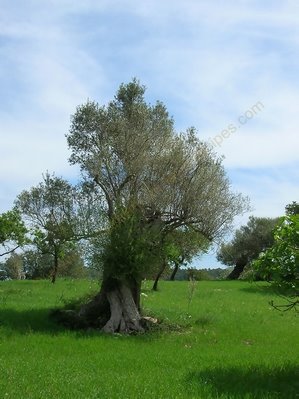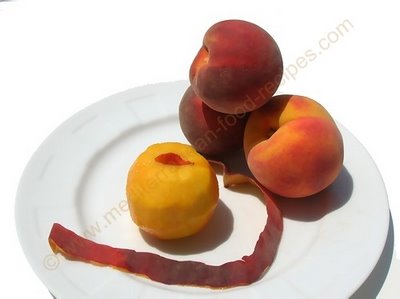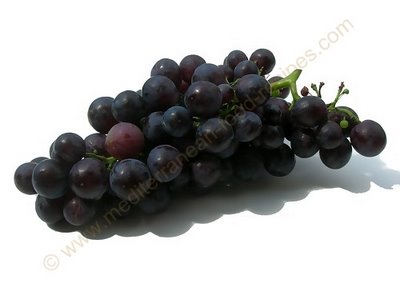Extra virgin olive oil has become such a symbol of healthy eating that it is hard to believe that it was once accused of increasing the harmful cholesterol. It was a fat, so it had to be bad for us. Fortunately, we left those times behind and now olive oil and most fats are much better understood.The main reason olive oil is healthy is because it is rich in healthy monounsaturated fatty acids. About 75% of that monounsaturated fat is oleic acid, which is very stable even at high temperatures. Moreover, our body processes oleic acid easier than other fatty acids.
Secondly, organic extra virgin olive oil also contains high levels of antioxidants like phenols, and vitamins E and A, which fight free radicals and thus prevent premature aging. Those antioxidants help neutralize the oxidation process, which is common to alls fats, and preserve the properties of olive oil too.
So, the fact that olive oil is capable of resisting oxidation at higher temperatures much better than seed oils makes it the safest vegetable oil for frying.
Many in the non-Mediterranean industrialized countries feel uneasy when a Mediterranean recipe calls for frying in olive oil. Frying is an old cooking technique that is very popular in the Mediterranean cuisines. It is as much an integral part of the healthy traditional Mediterranean diet as consuming raw olive oil with bread and salads.
Some olive oil tips for the kitchenWhen heated up, olive oil expands in volume and food absorbs it less than other cooking oils. Therefore, you need a smaller quantity of olive oil.
If it didn't burn in your frying pan, you can reuse olive oil up to three times. Some say even five times, but I personally never use it more than twice.
Olive oil transmits flavors between foods, so never fry meat in olive oil you used to fry fish and vice versa. My grandmother always kept a jar for fish and one for meat next to the olive oil bottle. It is the best way not to get flavors mixed up.
Finally, olive oil looks thicker than other vegetable oils, but this is only appearance as, contrary to popular belief, it has no more calories than sunflower oil, for instance.
Olive oil for your health In the 13th century Arnau de Vilanova, doctor of the Catalan royal family, already realized that a moderate intake of olive oil enhanced the vital functions of the body. In the 20th century, the late American doctor, Ancel Keys MD, documented that the olive oil based Mediterranean diet reduces the risk of cardiovascular disease.
We see that contemporary research has confirmed what the Mediterranean peoples knew and practiced intuitively all along.
Heart disease is the Achilles' heel of modern societies living at a frantic pace. Since Dr. Keys and his followers realized that we in the Mediterranean have a better cardiovascular health, the first medical studies on olive oil focused mainly on that area.
They proved that olive oil balances the cholesterol levels, can reduce the risk of a heart attack, can play a role in the prevention of arteriosclerosis, and fights high blood pressure.
Later, research was extended to other areas like digestion, cancer, and diabetes. The results have been very positive and olive oil usually comes through with flying colors.
One particular study concluded that with only two tablespoons of virgin olive oil every day you can begin to experience the health benefits that the Mediterranean peoples have enjoyed for so long. Incorporating it naturally into your eating practices is simple.
How to integrate olive oil in your eating practicesThe easiest way is to get into the habit of drizzling olive oil over slices of bread or toasts, consuming it as a dressing for sandwiches instead of butter, and adding it to salads with some salt.
Wherever you go in the Mediterranean, Morocco, Provence, Tunisia, Italy, Greece, Catalonia, Andalusia, or Majorca, you'll find people eating their own combination of bread and raw olive oil.
As a Catalan I eat
pa amb tomaquet, literally bread with tomato, almost every day: as part of my breakfast, as a snack, or, I admit, when I am too lazy to cook dinner. It is the Catalan bruschetta, so to say, and you can prepare it in no time with slices of bread or toasts, both are fine.
Here is the most basic recipe for
pa amb tomaquet. Cut a very ripe tomato crosswise, rub the bread with one half on both sides, drizzle olive oil liberally over the bread and sprinkle some salt.
You can eat it plain or add any topping and accompaniment you like: prosciutto-style or cooked ham, cheese, tuna fish, an omelet, anchovies, figs, olives. Even with a chocolate bar at tea or coffee time, it may sound weird, but it is delicious.
Other recipes with raw olive oil are authentic allioli, salads with olive oil dressing, cold sauces like romesco, and
sopa de farigola or thyme soup. As the Catalan saying goes:
Sopa sense oli no val un dimoni, literally,
Soup without oil isn't worth a devil, meaning that a soup with no oil is junk.
Here is the recipe. In a soup pot, bring 2-quart (2 l) water to a boil together with 2 peeled garlic cloves and 2 sprigs thyme. Simmer for 10 minutes and drain. Place 1 or 2 slices of country-style bread on the bottom of each soup bowl, drizzle them liberally with extra virgin olive oil and ladle the soup over it. In the spring and summer this soup is also great with mint instead of thyme.
Recent studies have shown that the health benefits of the Mediterranean diet are not derived from
olive oil alone, but from the Mediterranean diet as a whole. So, eat well and enjoy!
Labels: cooking tips, olive oil


















